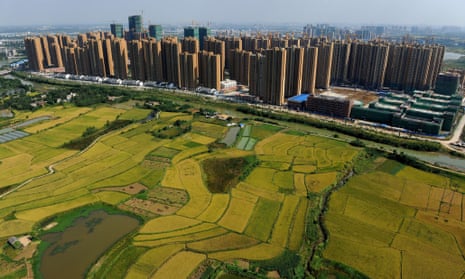It is refreshing and very welcome to hear the positive messages of the ecomodernist agenda, stimulating ideas and actions across different disciplines and across traditionally distinct groups. Also, it is good to see the emphasis placed on the potential contribution from technology to addressing environmental problems, though I am surprised that this is perceived to be so radical. Hasn’t technology and innovation always underpinned development and allowed people to reduce their direct dependence on natural resources?
Following comments by George Monbiot and others, my remarks are partly about the framing of the agenda, and partly to consider the limits to technological solutions.
On the framing of conservation, the ecomodernists present a polarised view of nature versus non-nature. They distinguish areas of the world that are given over to agriculture, or otherwise dominated by people, from areas of the world that still contain ‘nature’. Their pie chart shows just over half the world as nature, where nature is symbolised entirely by large, rare mammals, such as the great apes and the great whales. This framing sets people outside nature, and presents nature almost as a caricature, represented by some of the world’s most endangered species. But nature is everywhere, and people are part of nature. People have evolved alongside nature and nature provides us for free with all the things that underpin a healthy and fulfilling life – clean air, clean water, crops, a regulated climate, flood risk management, inspirational landscapes, beautiful species and many more. We cannot expect to continue to benefit from nature by putting it behind barriers and living apart from it. Neither can we expect to replace all these benefits that nature provides us with using technology. A recent review concluded that as you move back into the environment, starting with the goods that people use directly (energy, food, clean water), to the regulating services (climate regulation, flood control) and then to the underpinning ecological and evolutionary processes (nutrient cycling, primary production, decomposition), it becomes progressively harder for technology to augment them and progressively more often impossible to replace them. It would surely be reckless to intentionally separate people from the nature on which they depend, dismissing the close interdependence of people and nature that has supported us throughout human history.
Turning to the potential for technological solutions. Yes definitely, of course this is the place to look for new ways of doing things better – technologies to improve people’s lives and livelihoods, limit detrimental impacts on the environment, and reduce global inequalities at the same time. But it is rare for any new technology to be simply and straightforwardly a good thing. In almost all cases, there are unintended consequences or side-effects, and there are winners and losers, often dramatically distinguished. Sometimes these present stark choices and often, even though we recognise the issue, society does not seem to have developed the institutions and tools to address them.
- Nuclear power is an efficient and highly productive energy technology. But it has risks, recently roughly every 30 years there has been a major problem with a nuclear facility, and it presents a problem for future generations as they will have to continue to deal with the waste we generate.
- GM crops are without doubt a very significant technology for increasing the amount and reliability of food production. But here the benefits are extremely unevenly distributed; a very small number of large corporations are the primary beneficiaries and most of the people who should be benefitting have limited options to improve their own circumstances.
- The development of artificial nitrogen transformed agricultural production in the mid 20th century underpinning the first green revolution that fed a rapidly growing world population. But the side effects in the environment have been and continue to be serious and hard to manage, with disruptions to global nutrient cycles and hard-to-reverse changes to downstream rivers and lakes causing pollution and loss of fisheries.
It is important to appreciate that people’s lives are underpinned by nature, that not all of it (maybe only some very specific parts) are replaceable, and to beware of the idea that nature is dispensable, and that we can successfully live apart from it. Rather than the ecomodernist slogan ‘Save nature by not using it’, I would advocate ‘Save nature by using it, carefully and sustainably’
Georgina Mace is Professor of Biodiversity and Ecosystems at University College London and Director of the UCL Centre for Biodiversity and Environment Research

Comments (…)
Sign in or create your Guardian account to join the discussion